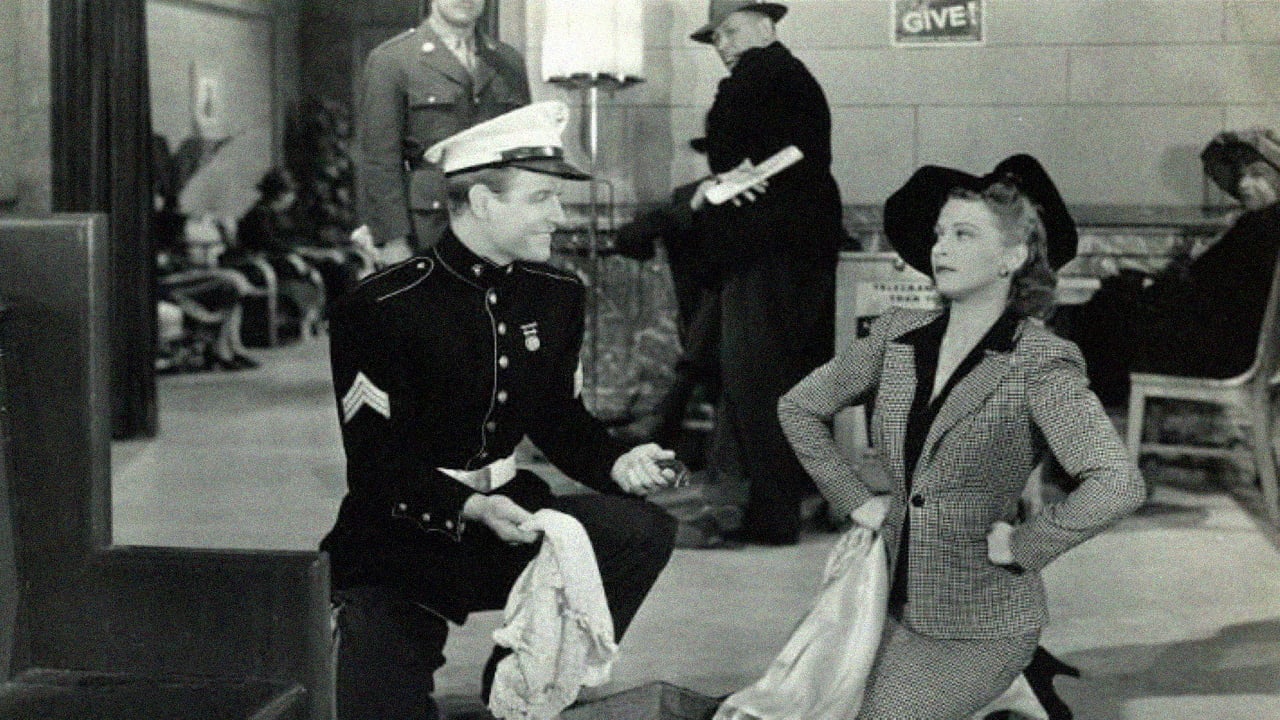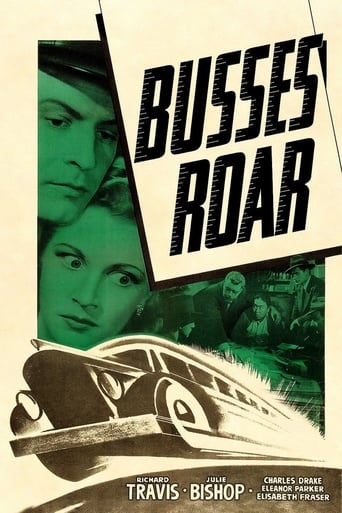

Buses Roar (1942) ** (out of 4) WWII propaganda from Warner about some German and Japanese spies who plot to put a bomb on a night bus so that it can blow up by an important stretch of road that will then hamper America's efforts in the war. Buses ROAR is actually a pretty interesting "B" movie but sadly there's just not enough suspense or drama in it to make it fully work. I thought a re-write of the screenplay and someone like Hitchcock could have made this an outright classic but sadly there are just way too many problems here. For starters, the lack of any real suspense is what puts the death nail in the coffin. The opening sequence shows us the bad guys talking about why they need this bomb to go off and this here actually builds up some interest. Instead of actually getting on the bus, for the next forty-minutes we get countless scenes inside the bus station where we're introduced to the large cast of characters. By the time we finally get on the bus we're just bored out of our minds from the countless dialogue sequence and director D. Ross Lederman just never gets our interest level up. When the bad guys finally show back up at the end it's more comical than anything else and especially with how over-the-top the foreign guys are shown. Richard Travis, Eleanor Parker, Charles Drake and Julie Biship are among the cast members and all deliver fine performances. Even Willie Best gets a somewhat decent role. Still, this "B" movie is mildly interesting for its subject matter but it just never rises to a higher level.
... View MoreProbably the most racial and gender stereotypes per foot of film than any other film. Something to offend everyone. Even making allowances for the early WWII hysteria it comes across poorly. One feels that the film makers weren't taking themselves seriously. There is a really gross jumpcut in one scene. Rather than try to hide it, the composer actually put a music sting on it. Maybe everyone thought they needed to do the film for the war effort.
... View MoreThis is a most enjoyable movie,catching the spirit of the enemy as depicted by Hollywood in early WWII. Such a movie would be "politically incorrect" these days, as would "Outrages of the Orient" which I recently purchased. I remembered it from childhood, but found it now to be trashy compared to "Buses Roar".
... View MoreThis Warners programmer is rarely seen today, and that's a pity. It does show up occasionally on DVD, and I found a 16mm copy in the Wisconsin State Historical Society. I enjoyed the entertaining World War II-based storyline with its loose-lips-sink-ships propaganda. Warners didn't miss adding a plug for Victory Bonds, either. (Good for them.) It's set mostly within a large bus terminal along the California coast on one dark night shortly after the onset of the War. Within the spacious interior, civilians and military personnel intermingle around the big waiting-room and its ticket counters, the news-stand, cocktail lounge and restaurant, and also eventually in the rear service areas. This interplay allows the opportunity for the human drama to unfold.At the time of production, there was a real-life submarine sighting along the West Coast, and in "Busses Roar" we see Axis spies and saboteurs scheme to plant a bomb on a coastline bus to create a target beacon for an offshore sub. That plot device pales, though, in comparison to the interesting characters who pass in and through the ornate bus station, each with his/her own traveler's tale to tell."Busses Roar" has a multi-personal, kaleidoscopic plot that you'll like, and another terrific plus is the great background music score by William Lava, Howard M. Jackson and Max Steiner. Today's expensive films should have such talent.The second half of the film has road action on the pre-Interstate nighttime coastline highways, within those long, low-slung, almost sinister-looking front-engine buses with rooftop luggage racks that predate today's boring cruiser-coaches. (Interestingly, they're equipped with radios for background music and war news.)As the spy plot thickens, there is a chase, failed brakes, and a runaway bus. (The buses do indeed roar as their headlights sweep the night and dramatic camera angles emphasize looming fenders, wheels and grilles. Great stuff.)The Warners cast pulls it off gracefully with humor and without heavy-handed tactics. Willie Best, of course, steals every scene.If you like the great 1940s Warner Brothers "look", or wartime-themed films, or great little programmers, or train/bus/plane/ship action films, seek out "Busses Roar". It's high entertainment that deserves being seen.
... View More